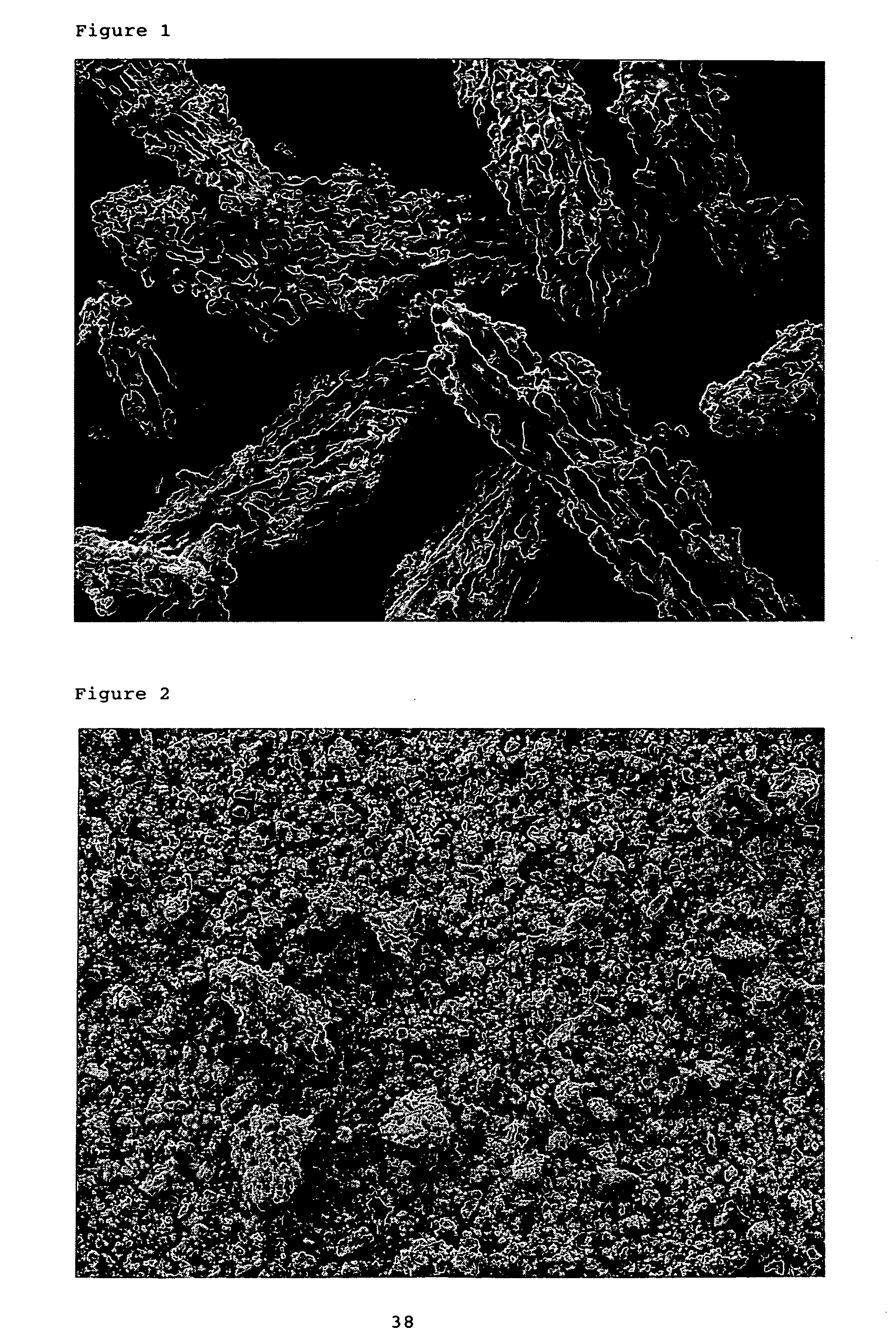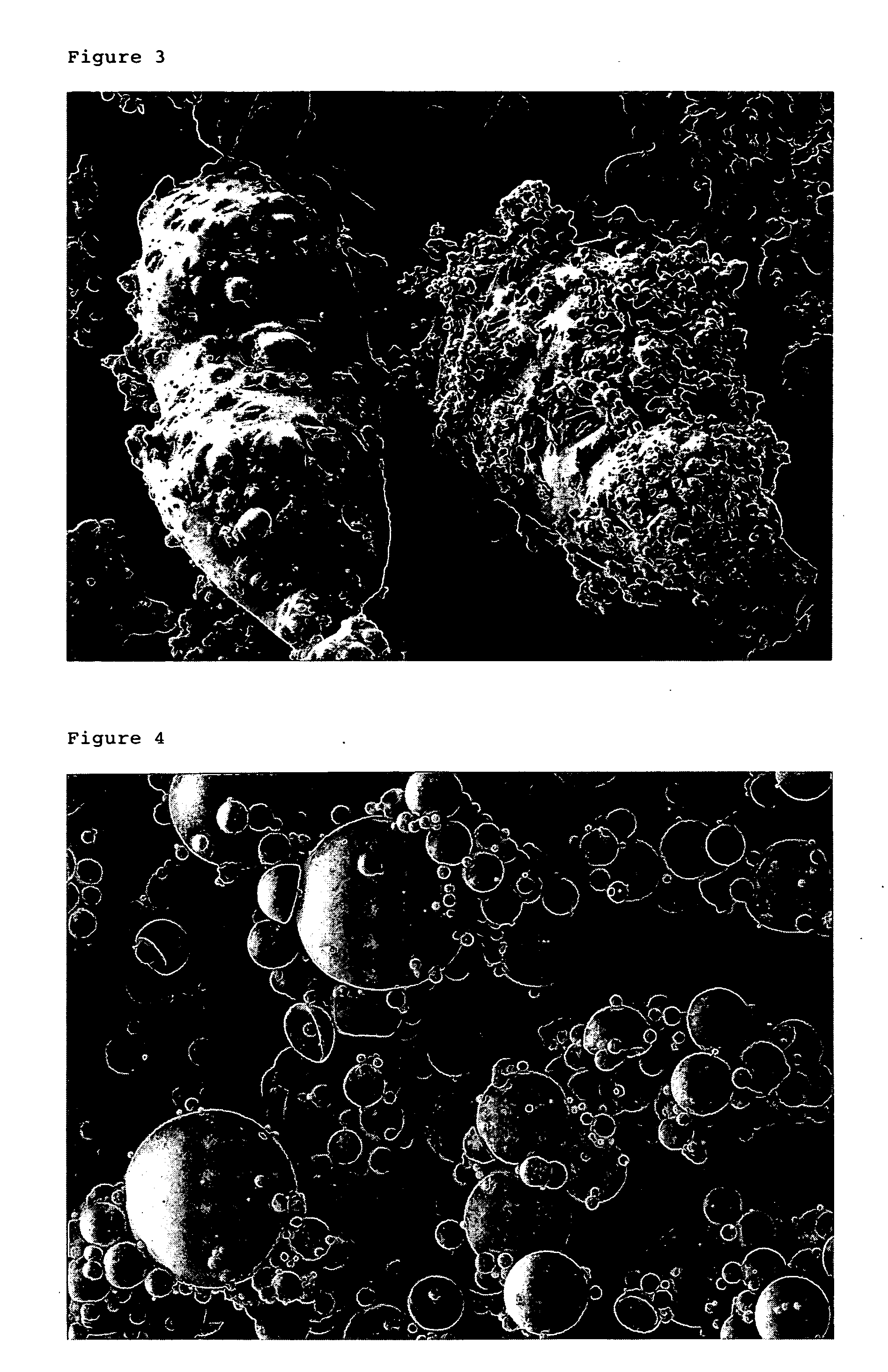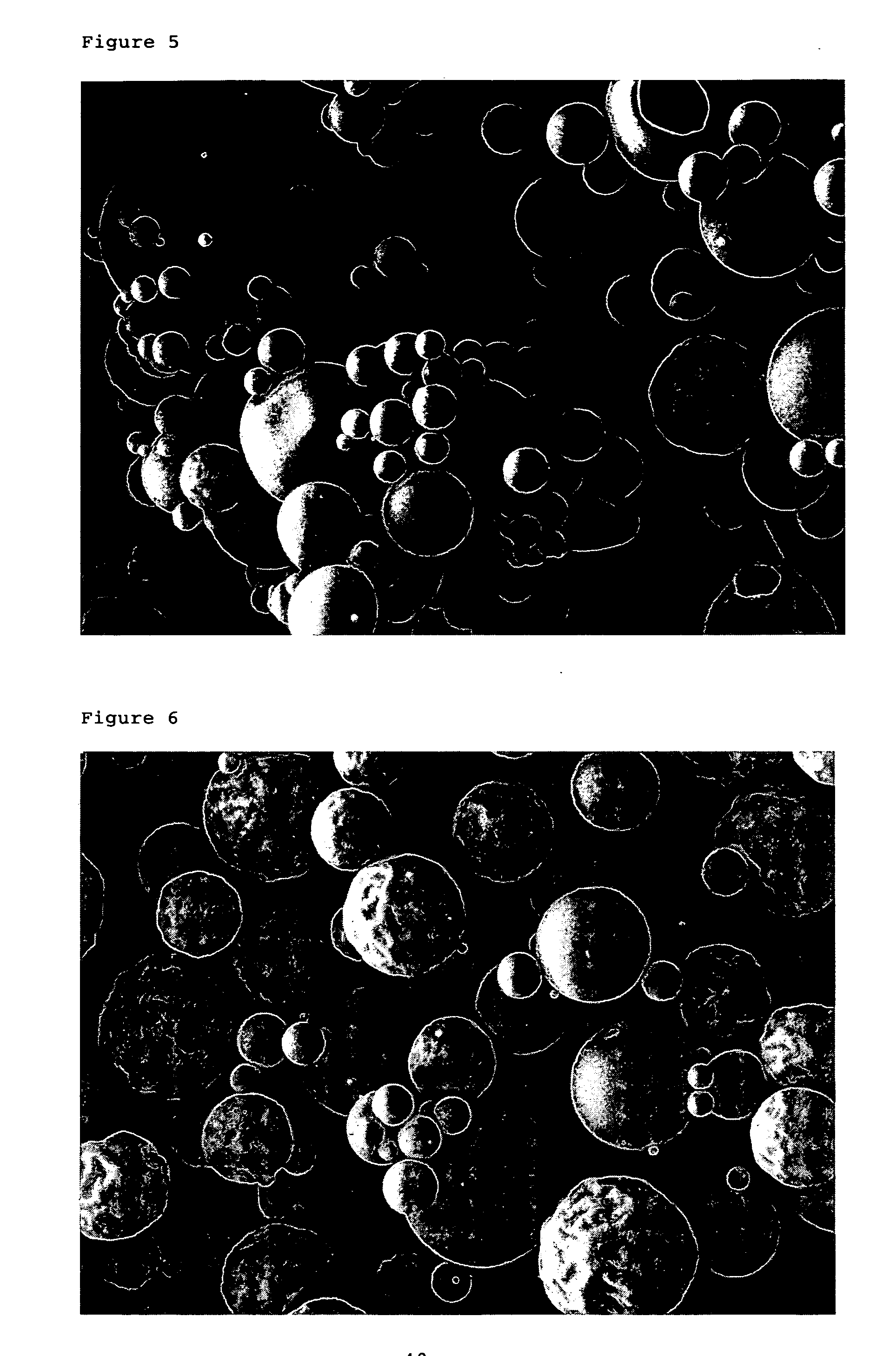Method for preparing powder exhibiting low susceptibility to electrification
a technology of electrification and powder, which is applied in the direction of animal repellents, cardiovascular disorders, drug compositions, etc., can solve the problems of difficult filling operation of powder to a vessel, difficulty in filling, and difficulty in reducing adhesion and dispersion to an apparatus or a vessel, so as to reduce the adhesion and dispersion to the apparatus or the vessel, and the operability of filling the vessel via a filling machine is significantly improved, the effect of charging
- Summary
- Abstract
- Description
- Claims
- Application Information
AI Technical Summary
Benefits of technology
Problems solved by technology
Method used
Image
Examples
example
Example 1
Manufacturing of Acetaminophen Powder Using PEG4000
[0123] Acetaminophen and PEG4000 were mixed at the following ratio: acetaminophen-PEG4000=2.8 g-701 mg (Mixed ratio 4:1, PEG adding ratio 0.25 (weight of PEG (mg) relative to 1 mg of pharmaceutical active compound)), acetaminophen-PEG4000=2.8 g-351 mg (Mixed ratio 8:1, PEG adding ratio 0.125), acetaminophen-PEG4000=2.8 g-176 mg (Mixed ratio 16:1, PEG adding ratio 0.06), and acetaminophen-PEG4000=14 g-437 mg (Mixed ratio 32:1, PEG adding ratio 0.03). The final concentration of acetaminophen was adjusted to 1.4% by weight by adding suitable amount of water and the solution was spray dried under the conditions mentioned below. Thus-obtained powders showed fine transit performance and were non-coloring in all samples. Especially, the powder of PEG adding ratio 0.03 showed excellent in the operability.
[0124] The powder obtained by drying a solution containing only acetaminophen (without adding PEG), which was prepared as a co...
example 2
Manufacturing of Compound (I-1) Powder Using PEG4000
[0133] Suitable amount of water for injection (final adding amount: 2.55 g or 1.11 g) was added to the mixture of 300 mg of Compound (I-1) which was synthesized according to the method of Japanese patent application laid-open JP-A No. 1995-53484 and 150 mg of D-mannitol, and the final concentration of Compound (I-1) was adjusted to 10% by weight or 18% by weight. After PEG4000 (110 mg, PEG addition ratio 0.37) was added thereto and the mixture was stirred enough, the solution was spray dried under the following conditions. [0134] Spray drying condition [0135] Spray dryer: Spray dryer SD-1000 (Tokyo Rikakikai Co., Ltd.) [0136] Speed of pump: scale 30 (about 6mL / min) [0137] IN-let temperature: 150° C. [0138] Out-let temperature: 90° C. [0139] Drying air volume: 0.60 m3 / min [0140] Spray drying pressure: 50 kPa (concentration of I-1: 18% by weight) 70 kPa (concentration of I-1: 10% by weight)
example 3
Manufacturing of Compound (I-1) Powder Using PEG400
[0141] Compound (I-1) powder was manufactured by a similar manner to Example 2 except that PEG400 (111 mg) (PEG adding ratio 0.37) was used instead of PEG4000 and the final concentration of Compound (I-1) in the solution was adjusted to 19% by weight. The obtained powder showed fine transit performance and excellent operability. FIG. 3 is a photograph of the obtained powder. [0142] Spray drying condition [0143] Spray dryer: Spray dryer SD-1000 (Tokyo Rikakikai Co., Ltd.) [0144] Speed of pump: scale 10 (about 2 mL / min) [0145] IN-let temperature: 170° C. [0146] Out-let temperature: 120 to 130° C. [0147] Drying air volume: 0.50 to 0.55 m3 / min [0148] Spray drying pressure: 50 kPa [0149] Collection bottle: heated at 60° C.
[0150] Experiment 1 Measurement of charge amount
[0151] 400 mg of the acetaminophen powder containing PEG4000 (Acetaminophen:PEG=32:1, PEG adding ratio 0.03) obtained in Example 1 and 3600 mg of iron powder (TEFV-200 / ...
PUM
| Property | Measurement | Unit |
|---|---|---|
| voltage | aaaaa | aaaaa |
| temperature | aaaaa | aaaaa |
| temperature | aaaaa | aaaaa |
Abstract
Description
Claims
Application Information
 Login to View More
Login to View More - R&D
- Intellectual Property
- Life Sciences
- Materials
- Tech Scout
- Unparalleled Data Quality
- Higher Quality Content
- 60% Fewer Hallucinations
Browse by: Latest US Patents, China's latest patents, Technical Efficacy Thesaurus, Application Domain, Technology Topic, Popular Technical Reports.
© 2025 PatSnap. All rights reserved.Legal|Privacy policy|Modern Slavery Act Transparency Statement|Sitemap|About US| Contact US: help@patsnap.com



